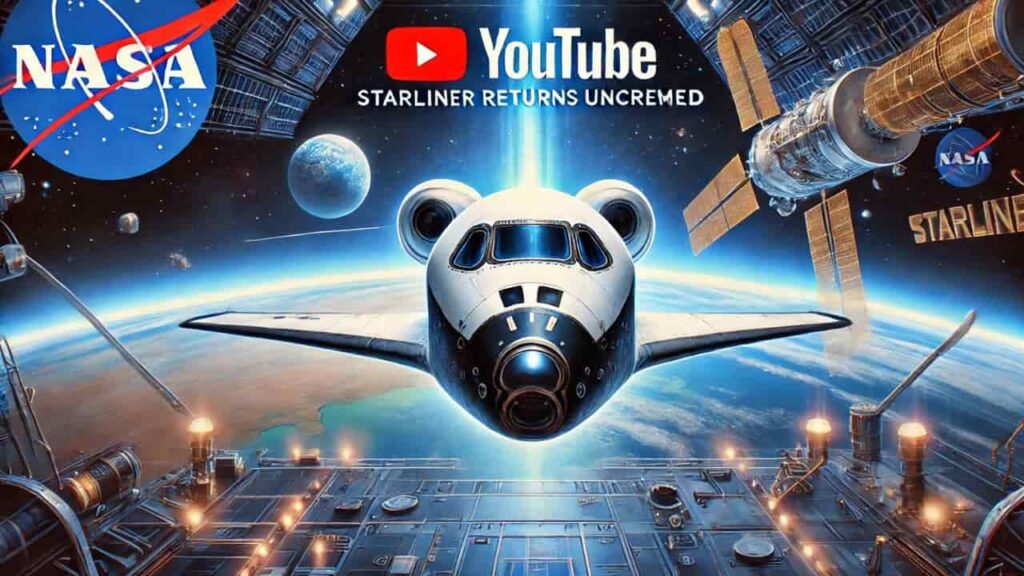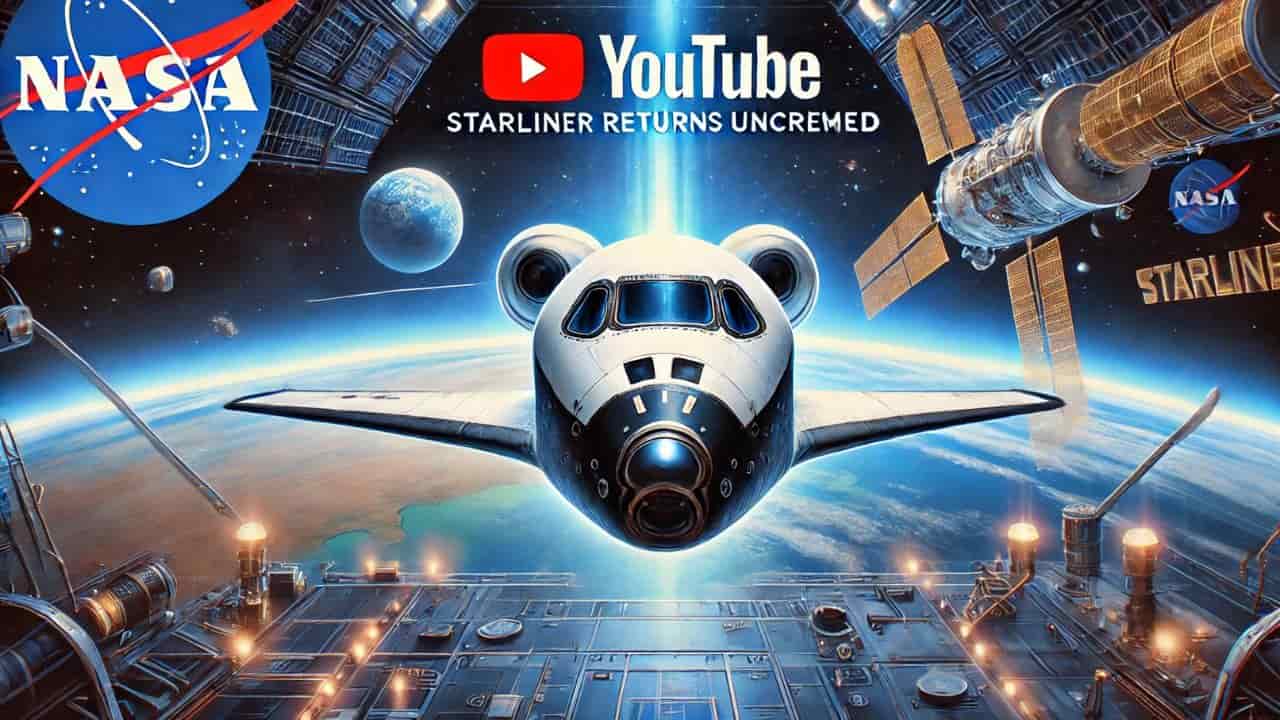NASA Starliner uncrewed return, Boeing Starliner safety, NASA spacecraft testing, Starliner mission ISS, Commercial Crew Program updates, NASA astronaut safety, Starliner re-entry
NASA decides to bring the Boeing Starliner spacecraft back to Earth without its crew, prioritizing astronaut safety. Discover the reasons behind this critical decision and the implications for future space missions.

NASA Decides to Bring Starliner Spacecraft Back to Earth Without Crew
In a significant decision reflecting NASA’s unwavering commitment to safety, the agency has decided to return Boeing’s Starliner spacecraft to Earth without its scheduled astronaut crew. The uncrewed return marks a pivotal moment in the ongoing collaboration between NASA and Boeing, highlighting the challenges and complexities inherent in human spaceflight. The decision, announced on Saturday, underscores the importance of risk management and data-driven decision-making in space exploration.
The Background of Starliner’s Mission
The Boeing Starliner, part of NASA’s Commercial Crew Program, has been designed to transport astronauts to and from the International Space Station (ISS). The spacecraft was originally intended to return to Earth with NASA astronauts Butch Wilmore and Suni Williams aboard. These astronauts had flown to the ISS in June 2024 as part of NASA’s Boeing Crew Flight Test, an essential step in certifying Starliner for regular crewed missions. During their time on the ISS, Wilmore and Williams were actively engaged in a variety of tasks, including supporting station research, maintenance, and conducting tests on the Starliner system.
The Decision to Return Without Crew
NASA Administrator Bill Nelson emphasized the inherent risks of spaceflight, stating, “Spaceflight is risky, even at its safest and most routine. A test flight, by nature, is neither safe nor routine.” This statement reflects NASA’s dedication to ensuring the utmost safety of its astronauts. The decision to return Starliner uncrewed is a clear manifestation of this commitment, as it allows NASA and Boeing to gather crucial testing data without exposing astronauts to unnecessary risk.
The challenges leading to this decision arose from technical issues encountered by Starliner during its mission. On June 6, as Starliner approached the ISS, NASA and Boeing engineers identified helium leaks and experienced problems with the spacecraft’s reaction control thrusters. These issues prompted extensive reviews and testing by NASA and Boeing engineering teams, who conducted flight and ground tests, hosted independent reviews, and developed various contingency plans for the spacecraft’s return.
Despite the efforts, the uncertainty surrounding these technical issues, combined with the lack of expert consensus, did not meet NASA’s stringent safety and performance requirements for human spaceflight. Consequently, NASA leadership decided to prioritize astronaut safety by shifting Wilmore and Williams to the Crew-9 mission aboard a SpaceX Dragon spacecraft, scheduled to return to Earth in February 2025.
The Implications of the Uncrewed Return
The decision to return Starliner without its crew has significant implications for the future of NASA’s Commercial Crew Program and the development of space transportation systems. Ken Bowersox, associate administrator for NASA’s Space Operations Mission Directorate, praised the thorough analysis and transparent discussions that led to this decision. He acknowledged the valuable insights gained from Starliner’s journey to the ISS and its docked operations, which will inform future missions and improvements to the spacecraft.
Starliner’s return is expected to take place in early September, with the spacecraft making a controlled, autonomous re-entry and landing. This uncrewed return will provide NASA and Boeing with critical data on Starliner’s performance during re-entry, which will be vital for addressing the issues encountered and ensuring the spacecraft is ready for future crewed missions.
Steve Stich, manager of NASA’s Commercial Crew Program, emphasized the importance of the uncrewed return in achieving a higher level of certainty for Starliner’s performance. “Starliner is a very capable spacecraft, and this flight test is providing critical information on Starliner’s performance in space,” Stich said. The data gathered during the uncrewed return will significantly benefit future corrective actions for the spacecraft, helping to ensure its readiness for human spaceflight.
The Path Forward for Starliner and NASA’s Commercial Crew Program
NASA’s Commercial Crew Program has been instrumental in developing safe, reliable, and cost-effective transportation to and from the ISS. The program requires spacecraft to undergo a crewed test flight to prove their readiness for regular missions. While the decision to return Starliner uncrewed may seem like a setback, it is a necessary step in ensuring the spacecraft meets NASA’s rigorous certification requirements.
Following Starliner’s return, NASA will conduct a comprehensive review of all mission-related data to determine what additional actions are needed to certify the spacecraft for future crewed flights. This review will be crucial in addressing the technical issues encountered during the mission and ensuring that Starliner is fully equipped to safely transport astronauts in the future.
Meanwhile, NASA’s SpaceX Crew-9 mission, originally planned to include four crew members, will now launch no earlier than September 24, 2024. The Crew-9 mission will be the ninth rotational mission to the ISS under the Commercial Crew Program. NASA and SpaceX are working to reconfigure the Crew-9 Dragon spacecraft to accommodate the additional cargo, personal effects, and Dragon-specific spacesuits needed for Wilmore and Williams. The launch will take place from Space Launch Complex-40 at Cape Canaveral Space Force Station in Florida, providing increased operational flexibility.
The Importance of the ISS and Future Exploration
For over two decades, the ISS has served as a critical platform for advancing scientific knowledge and testing new technologies in space. The station plays a vital role in helping NASA understand and overcome the challenges of long-duration spaceflight, paving the way for future human exploration of Mars. The continued collaboration between NASA and commercial companies like Boeing and SpaceX is essential for expanding commercial opportunities in low Earth orbit and advancing the Artemis campaign, which aims to return humans to the Moon and eventually send astronauts to Mars.
The uncrewed return of Starliner is a reminder of the complexities and challenges associated with human spaceflight. It highlights the importance of rigorous testing, data analysis, and risk management in developing safe and reliable spacecraft. NASA’s decision to prioritize astronaut safety and gather more data before certifying Starliner for crewed missions reflects the agency’s commitment to ensuring the success of its Commercial Crew Program and the long-term sustainability of human space exploration.
Conclusion
NASA’s decision to return the Boeing Starliner spacecraft to Earth without its crew is a testament to the agency’s commitment to safety and the rigorous standards required for human spaceflight. While the uncrewed return may delay Starliner’s certification for regular crewed missions, it is a necessary step in ensuring the spacecraft’s readiness and reliability. The data gathered during the uncrewed return will be invaluable in addressing the technical issues encountered during the mission and improving the spacecraft for future flights.
As NASA and Boeing continue to work together to refine Starliner’s systems and prepare for future missions, the lessons learned from this mission will contribute to the overall success of the Commercial Crew Program. The program’s goal of providing safe, reliable, and cost-effective transportation to and from the ISS remains unchanged, and the uncrewed return of Starliner is a crucial step in achieving that goal.
Read More
- NASA and Sierra Space Dream Chaser Arrives in Florida for Launch Prep
- NASA Webb Telescope Hints at Possible Atmosphere Surrounding Rocky Exoplanet
- NASA Artemis Generation: Cultivating the Moon Trees Across America
- SpaceXs New Falcon 9 Booster Successfully Launches 22 Starlink Satellites Boosting Global Connectivity










